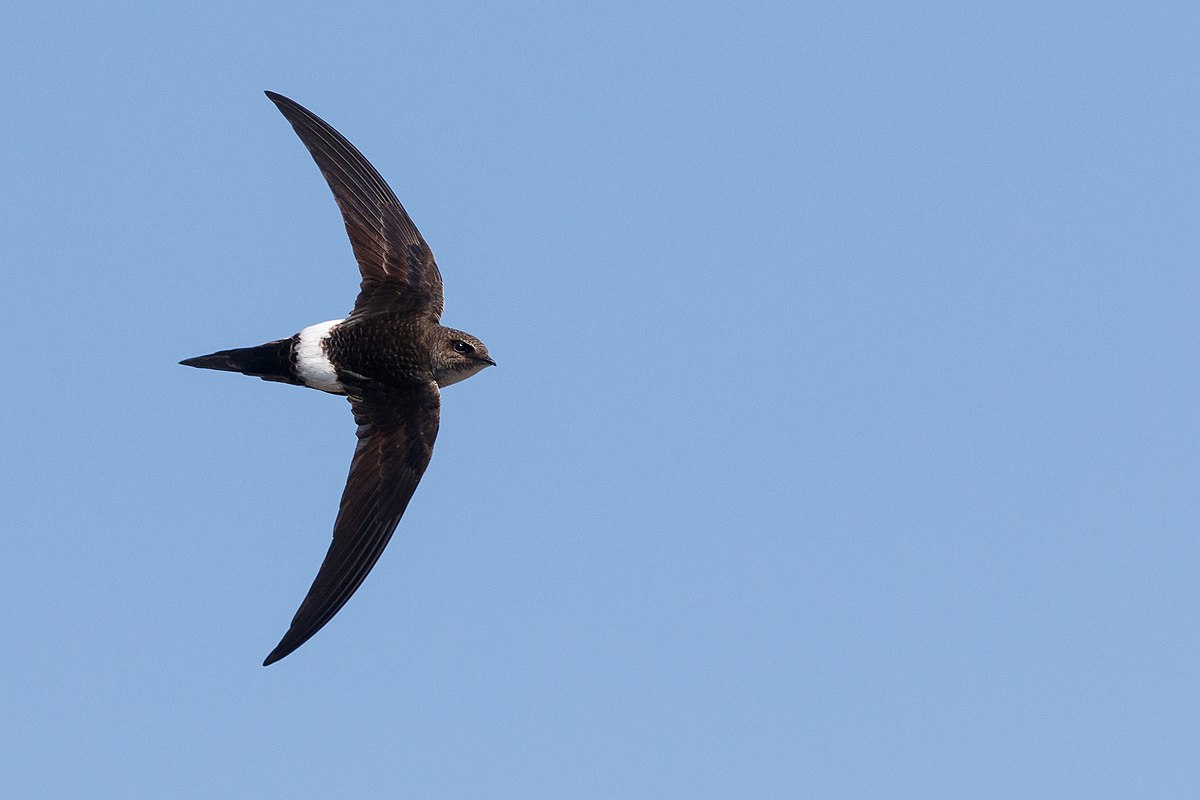
Swift birds are among the most fascinating and remarkable creatures in the avian world. With their sleek, aerodynamic bodies and astonishing speed, these birds exhibit a range of captivating behaviors and characteristics. From their remarkable migratory patterns to their agile hunting techniques, swift birds have long captured the imagination of bird enthusiasts and researchers alike. In this article, we will delve into 32 intriguing facts about swift birds, shedding light on their unique adaptations, nesting habits, and extraordinary aerial abilities. Whether you're a seasoned birdwatcher or simply curious about the natural world, these insights will offer a deeper understanding of these remarkable avian wonders. So, let's spread our wings and embark on an exhilarating journey into the captivating realm of swift birds.
Key Takeaways:
- Swift birds are incredible fliers, catching insects in mid-air and sleeping while flying. Their resilience and grace inspire awe, reminding us of the beauty and wonder of flight.
- Swifts play a vital role in pest control and ecosystem balance. Their unique nesting habits and migratory behavior make them fascinating ambassadors of the skies, captivating our imagination with their aerial prowess.
32 Great Swift Bird Facts
Swift birds are fascinating creatures that captivate the imagination with their aerial prowess and unique characteristics. Here are 32 great facts about these remarkable avians:
Swifts are superb fliers
Swifts are known for their exceptional flying abilities, spending most of their lives in the air. They are incredibly agile and can maneuver with great precision, making them a marvel to watch.
They have a distinctive appearance
With long, slender wings and a streamlined body, swifts are built for flying. Their short legs and forked tails further distinguish them, emphasizing their aerial lifestyle.
Swifts are master migrants
These birds embark on impressive migrations, traveling thousands of miles between their breeding and wintering grounds. Their endurance and navigational skills during these long journeys are truly remarkable.
They are superb aerial hunters
Swifts catch insects while in flight, using their wide beaks to snatch prey from the air. Their diet mainly consists of flying insects, and they are adept at hunting on the wing.
Swifts are social birds
These avians are often seen in large flocks, especially during migration. Their gregarious nature is evident as they soar and wheel through the skies together.
They have a unique nesting behavior
Swifts build their nests in hard-to-reach locations such as inside chimneys, caves, or under building eaves. Their nests are constructed using their saliva, which hardens to form a secure structure.
Swifts are superbly adapted to aerial life
Their short, powerful legs are designed for clinging to vertical surfaces, while their feet are equipped with sharp claws to aid in clinging to nest sites.
They have a distinctive call
The high-pitched, chattering calls of swifts are often heard as they soar overhead. Their vocalizations are an integral part of their airborne existence.
Swifts are highly specialized for flight
Their streamlined bodies and long, curved wings enable them to achieve incredible speeds and perform intricate aerial maneuvers with ease.
They are long-lived birds
Swifts are known for their longevity, with some individuals living for over a decade. Their ability to survive and thrive in the air contributes to their impressive lifespan.
Swifts are found across the globe
These birds have a wide distribution, inhabiting diverse habitats across continents. From urban areas to remote wilderness, swifts have adapted to various environments.
They are indicators of ecosystem health
The presence of swifts can serve as an indicator of a healthy ecosystem, as their reliance on flying insects reflects the abundance of aerial prey.
Swifts are known for their synchronized flight
During feeding and breeding, swifts exhibit coordinated flight patterns, creating mesmerizing displays as they move together in unison through the sky.
They have unique breeding habits
Swifts are monogamous and form long-term pair bonds. They return to the same nesting sites year after year, reinforcing their commitment to their chosen breeding locations.
Swifts are highly vocal during breeding season
Their aerial courtship displays are accompanied by a cacophony of calls, with males and females engaging in elaborate vocalizations as part of their mating rituals.
They are adept at foraging on the wing
Swifts are skilled at capturing insects while flying, using their agile flight capabilities and keen eyesight to locate and seize prey during their airborne pursuits.
Swifts have a fascinating sleep behavior
These birds are known for their ability to sleep while flying, with one half of their brain remaining active while the other enters a sleep state—an adaptation that allows them to rest during migration.
They are sensitive to weather conditions
Swifts are highly attuned to weather patterns, adjusting their flight behavior in response to atmospheric changes and utilizing updrafts to aid their aerial movements.
Swifts are declining in some regions
Habitat loss, changes in building construction, and a decrease in insect populations have contributed to declines in swift populations in certain areas, highlighting the need for conservation efforts.
They play a role in pest control
As voracious insect predators, swifts help regulate insect populations, making them valuable contributors to natural pest control systems.
Swifts have inspired human creativity
The remarkable flight abilities and aerial grace of swifts have influenced art, literature, and scientific endeavors, leaving a lasting impact on human culture.
They are associated with folklore and symbolism
Swifts have been revered in various cultures, symbolizing freedom, agility, and the boundless expanse of the sky. Their presence in folklore reflects the enduring fascination with these enigmatic birds.
Swifts have unique physiological adaptations
Their ability to enter a state of torpor during inclement weather or food scarcity allows them to conserve energy—a vital survival strategy for these aerial nomads.
They are the subject of ongoing research
Scientists continue to study swifts to unravel the mysteries of their migratory behavior, flight dynamics, and ecological interactions, shedding light on the intricate lives of these captivating birds.
Swifts are celebrated in conservation initiatives
Efforts to protect swift populations and their nesting sites are underway, emphasizing the importance of preserving these remarkable avian ambassadors of the skies.
They are revered for their resilience
Despite facing various challenges, swifts endure and persist in their airborne existence, embodying resilience and adaptability in the ever-changing natural world.
Swifts evoke a sense of wonder
Their ethereal presence and airborne prowess evoke a sense of wonder, inspiring awe and admiration as they navigate the vast expanses of the sky with effortless grace.
They are integral to ecosystem dynamics
The ecological role of swifts as aerial predators and contributors to nutrient cycling underscores their significance in maintaining the balance of diverse ecosystems.
Swifts exemplify the beauty of flight
Their mastery of the aerial realm serves as a testament to the beauty and wonder of flight, reminding us of the boundless possibilities that unfold in the open skies.
They inspire a connection to the natural world
Encountering swifts in flight fosters a deep connection to the natural world, offering a glimpse into the extraordinary lives of these avian marvels and the intricate tapestry of life on Earth.
Swifts embody the spirit of freedom
With their unbridled flight and untethered existence in the skies, swifts symbolize the enduring spirit of freedom and the unbounded horizons that beckon to the adventurous at heart.
Swift birds are truly remarkable creatures, embodying the essence of freedom, resilience, and aerial elegance. Their presence enriches the tapestry of the natural world, captivating our imagination and inspiring a profound appreciation for the wonders of flight and the boundless expanse of the skies. As these avian marvels continue to grace the heavens with their ethereal presence, they serve as a poignant reminder of the enduring beauty and grace that permeate the world around us.
Conclusion
In conclusion, swift birds are truly remarkable creatures, known for their exceptional speed, aerial agility, and fascinating migratory patterns. These avian marvels have captured the curiosity of humans for centuries, inspiring awe and admiration with their remarkable abilities. From their impressive aerial displays to their vital role in maintaining ecological balance, swift birds continue to be a source of wonder and fascination. As we strive to protect and understand these incredible creatures, their significance in the natural world becomes increasingly apparent. With their unique characteristics and captivating behaviors, swift birds remain an integral part of the intricate tapestry of wildlife, enriching our planet with their presence.
FAQs
What is the average lifespan of a swift bird?Swift birds have an impressive lifespan, with some species living up to 10 years in the wild. However, due to their elusive nature and migratory habits, accurately determining their average lifespan can be challenging.
How do swift birds navigate during their long migrations?Swift birds possess remarkable navigational abilities, utilizing celestial cues, landmarks, and even the Earth's magnetic field to guide their extensive migrations. This innate sense of direction enables them to embark on extraordinary journeys spanning thousands of miles.
What is the significance of swift birds in the ecosystem?Swift birds play a crucial role in the ecosystem by controlling insect populations, particularly during their breeding seasons when they consume vast quantities of flying insects. Their foraging behavior contributes to the natural balance of insect populations, making them valuable allies in pest control.
Was this page helpful?
Our commitment to delivering trustworthy and engaging content is at the heart of what we do. Each fact on our site is contributed by real users like you, bringing a wealth of diverse insights and information. To ensure the highest standards of accuracy and reliability, our dedicated editors meticulously review each submission. This process guarantees that the facts we share are not only fascinating but also credible. Trust in our commitment to quality and authenticity as you explore and learn with us.


